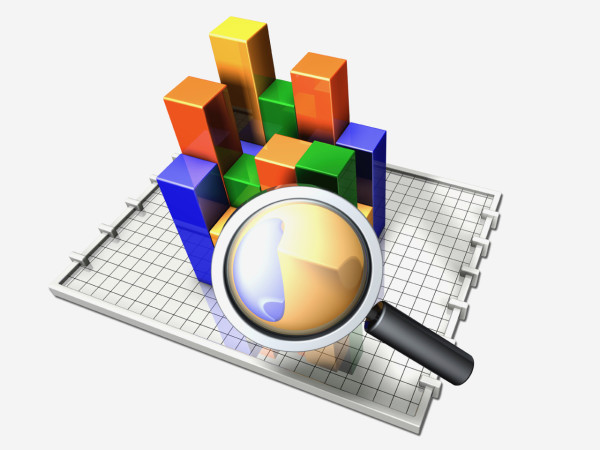
System monitoring, dashboard displays, and data reporting are established topics in the professional AV conversation, but there are new reasons to get excited about these developments. The main idea around identifying device usage, display usage, and room activities has been about enhancing the value of an AV control system. But what does that really mean, and how is the data conversation changing in 2018?
While the information gleaned from a connected AV system can give technology managers and organizational decision makers key metrics and provide insight for future needs, not all data provides value. Also, more data is not necessarily better.
DATA: MORE THAN IT SEEMS
On the surface, the notion of gathering and presenting information on the usage of a device, system, or space, seems to be a feasible and straightforward concept. However, in reality, doing this effectively is more difficult than it seems. The challenge lies in a few key areas:
- Understanding the information that is important to target audience
- Identifying the specific data to collect
- Ensuring that the system and devices can provide the data required
- Defining how to store and retrieve the data
- Confirming the accuracy and relevance of the data
- Correlating the points data to other data or parameters
- Displaying the data is valuable manner
Data not only has to be properly identified, collected, and stored, it also needs to be meaningfully retrieved and processed. For example, knowing that one device is utilized more than another device can be useful, but it is not particularly insightful. However, the ability to drill down and understand more specific detail on the behaviors of a device, system, room, or user becomes a lot more valuable. Details like how a room is used, when a room is used, how many people use the room per session, what activities take place in the room by which users, and what is the room utilization can be easily identified by collection and processing appropriate data.
The power of data collection becomes useful when the data is correlated to other data or specific parameters. A way of demonstrating this concept is by looking at how data is utilized in business and marketing. It is not only important to understand the number leads, proposals, and sales that are generated from website or other marketing vehicle; it is incredibly valuable to understand additional details like where those leads came from, what to the leads have in common, when is the peak time for converting opportunities, what activities create the largest amount of leads, is there something preventing visitors from taking action, and what do proposals that convert have in common. In the end, the data should clearly point to what do more of, what is working, and what to adjust that isn’t working.
When looking at an AV system, the same principles should apply. The data collected needs to be correlated to other data or parameters that make its relevance substantial. These additional parameters can come in the form of time of day, room schedule of usage, or specific users. Correlating these parameters with the understanding of the usage of the room as well as advanced metrics like the “health of the system” and “satisfaction of users” can lead to useful results and conclusions.
When talking about the “health of the system,” indications can come from specific data like dropped calls, ambient noise in the room, equipment and room temperature, network usage, battery levels of microphones or other non-hardwired devices, and verification of device communication and signal presence. The “satisfaction of users” can be found in the number of service tickets, help requests, and by requesting feedback form the users while using the system.
IT’S ABOUT RELATIONSHIPS
By analyzing the relationship between the data in real time, alerts can be set based on user-defined thresholds and important trends will arise leading to predictable and actionable behavior. An example is demonstrated by analyzing the usage of that room is experiencing problems. It’s usage will likely decline possibly before the issues are reported. Additionally, if a room demonstrates a trend of being available and unused at a particular time of day although others are in high demand, it may indicate that there is something causing it be uncomfortable like location, noise, temperature, or sun glare. Collecting and processing relevant data should can be an early indicator that a potential issue needs to be explored.

Taking it from another angle, correlating details on the users to the room usage and activity helps to identify if a device, application, room characteristic, or feature resonates with one type of user versus another. This information indicates the needs of specific types of users, departments, and demographics instead of presuming that all users are equal. For example
one type of user may want a simpler, easier to use interface, while others prefer flexibility and full featured functionality. Another group may prefer rooms that are a shorter distance from their office, elevator, or common area while others prefer a quieter, remote location.
ACQUIRING DATA
Now that the relevance of data and value of correlating data and parameters has been demonstrated, the next step is to understand how to acquire the data. First, it is important to understand that data can be collected in many fashions and by many applications. Button presses or actions of a user can be logged, the functions or feedback from a device can be monitored, the room schedule can be interpreted, the environmental conditions can be measured, and even the success or satisfaction of the user experience can surveyed. However, the objective is not to collect as much data as possible, it is more about focusing on the data that is meaningful and this comes down to what goals are trying to be achieved.
GET SPECIFIC
In addition to understanding what data is meaningful, understanding how to measure data in an effective fashion is also critically important. Device usage is a common request, but what defines device usage? Is it defined by how many times the device is selected for display by cumulative total or by frequency? Is it defined by how long the device is displayed or utilized? Is it defined by how the device is utilized? Some specific examples of utilization would be to determine if a computer being used for display vs. a soft codec call? Or, Is a dual display setup used to display two different sources or only one?
The importance of asking specific questions and defining particular parameters for measurement is meant to provide relevance to the data making it meaningful and consistent. Without guidelines regarding how to obtain the data and an understanding of what the data means, the metrics will have very limited value.
Obtaining data not only depends on how it is measured, it is also dependent on the design of system and the capabilities of devices to provide the data requested. This is where sensors, device APIs, connectivity to external systems, and programming functionality to acquire the desired information are critical to achieving the desired outcome. Standard device control modules or drivers do not typically support the specific functionality that would be valuable for monitoring. This is important to understand. In the past, when the focus of device integration has been primarily on “controlling” device and the user interaction, control modules provided only the features and functionality associated with the assertive control functions that would appear on a user interface such as power, source selection, play, stop, dial, hang up, etc. and their feedback states.
KNOW THE NUANCES
When considering data collection and monitoring, the required feature set for a control module or driver can be very different. Some important features may include device connection status, up-time, temperature, energy usage, call speed, call length, number of dropped calls, network speed, network bandwidth, battery life, signal strength, etc. Our industry needs to channel the IT side of AV for reference when defining these metrics, as they are commonly collected and monitored in IT management. This is the type of information that technology managers and clients require to address needs, draw conclusions, and base decisions. Therefore, manufacturers need to work together with programmers to identify what valuable metrics can be drawn from their devices, ensure that the data can be easily obtained via the API, and invest in an expanded set control modules or drivers specifically geared toward supporting monitoring applications and data retrieval.
The last aspect that needs to be considered is presenting the data is a usable fashion that is easy to interpret, clearly demonstrates trends, and can be used to make decisions without much effort. In its best format, it would be an executive summary of the most useful information at a glance. Alternately, having pages of reports that a technology manager or decision maker needs to read through to interpret on their own is not an effective solution. This is where we need to rely on a scope of work and list of objectives that are defined upfront to ensure that we identify what is information is important to the client, define how to acquire the data to support this need, and present the results in a manner that is easy to understand and actionable.
If done well, data collection can provide extremely useful insight and become a valued feature of AV systems. If data is not collected properly or is not meaningful, it can provide a false sense of confidence that will misleading and hinder client satisfaction. As is the case with AV control functionality, it is important to understand what is important to the client, define how to provide an effective solution, and design the system to satisfy the requirements. Control programming or software development plays a critical role in the process, not only for acquiring the desired information, but also in compiling and analyzing the data to produce valuable metrics and trends. What is important to remember is that is that the conclusions drawn from this data should be able to fuel decision-making for purchases, increase system usability, and improve user experience.
Although system monitoring and data collection seem like a daunting effort, if approached similarly to defining the control functionality of a typical project, with processes and procedures in place to establish agreed upon expectations, it will become easy to achieve a successful outcome.
Steve Greenblatt, CTS, is president and founder of Control Concepts, a provider of specialized software and services for the audiovisual industry. Steve is currently a member of the AVIXA Leadership Search Committee and has served on the AVIXA Independent Programmers Council, Audiovisual Systems Energy Management Performance Task Force, and AV Systems Implementation Best Practices Task Force, and co-authored the white paper Modern Approaches to Control Systems Design.
INFO
CONTROL CONCEPTS
controlconcepts.net

